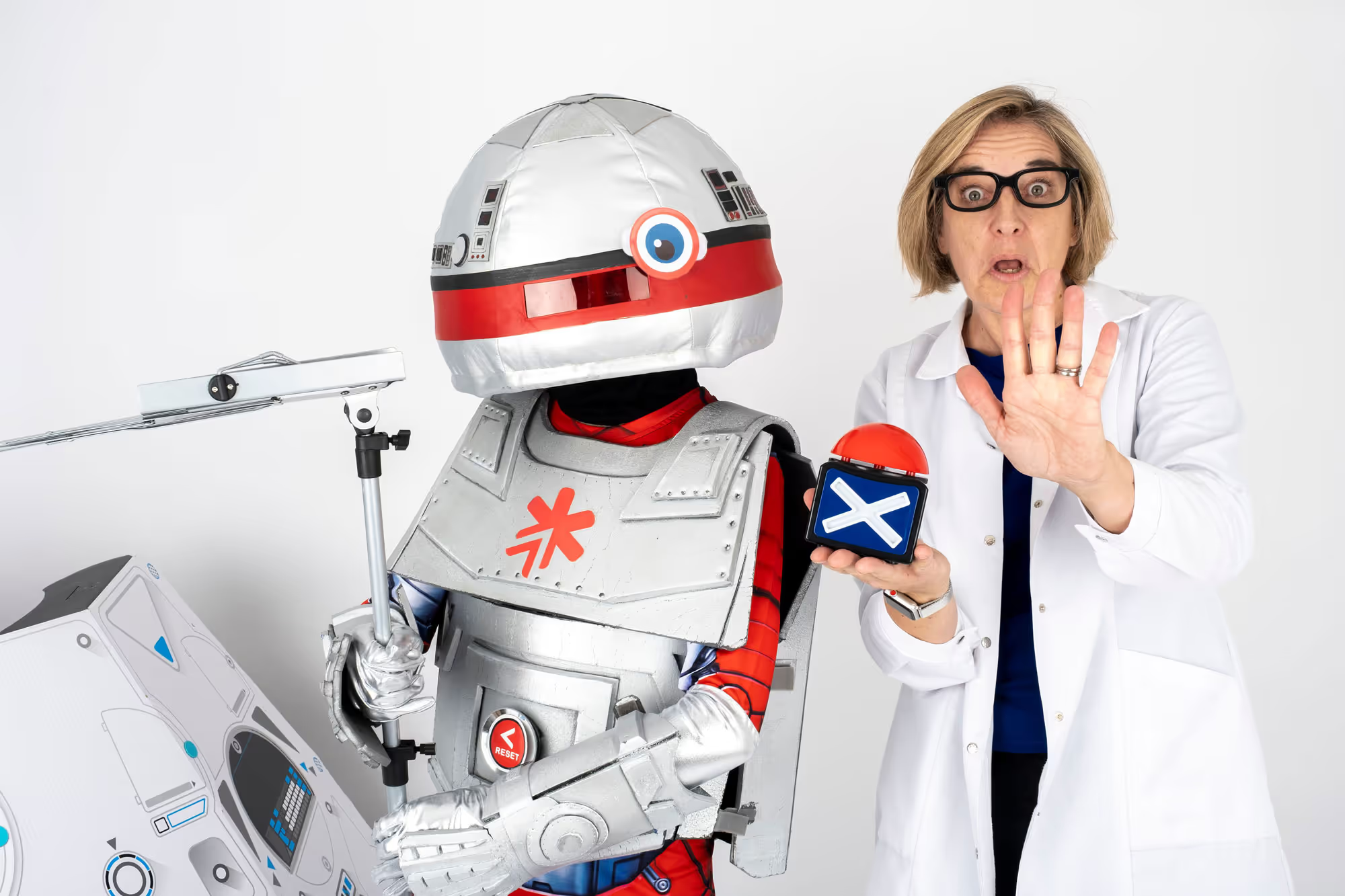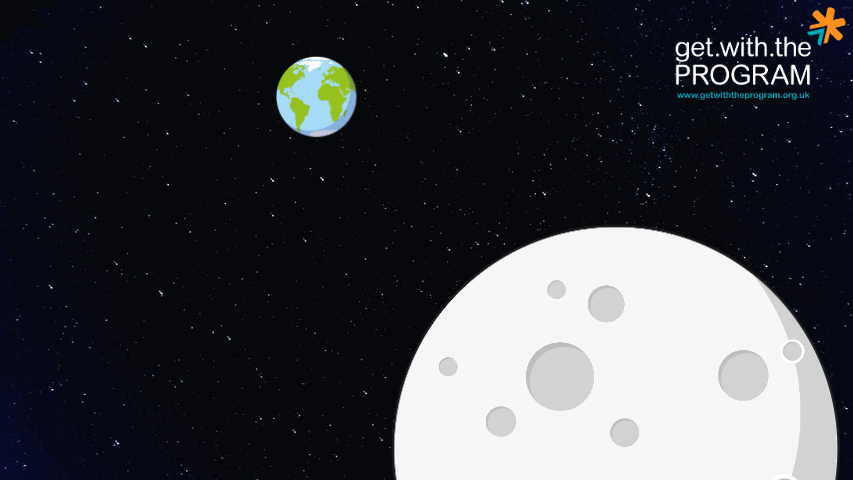How long ago did the first person land on the moon, and how many people helped work out how to get them there? This exciting show gives the children insight into the STEM careers involved in this amazing achievement and shows some of the diverse role models who made it all possible.

By working together with ‘Professor’ Trice and Al the Robot, your children will learn to design, write, test and debug algorithms on this adventure.
Their mission is to program Al to get her safely onto a Saturn V rocket, ready to launch her to the moon. But will they be successful in getting her on board?
Their mission is to program Al to get her safely onto a Saturn V rocket, ready to launch her to the moon. But will they be successful in getting her on board?
As well as having a lot of fun, we ensure key terms in the computing curriculum are covered - as you can see below!
Computing Curriculum Key Terms
Those covered in the Moon Landing Coding Adventure show are highlighted in blue below! All other key terms can be covered in selected follow-up activities.
KS1 Curriculum (ages 5-7)
• Understand what algorithms are; how they are implemented as programs on digital devices; and that programs execute by following precise and unambiguous instructions.
• Create and debug simple programs.
• Use logical reasoning to predict the behaviour of simple programs.
• Create and debug simple programs.
• Use logical reasoning to predict the behaviour of simple programs.
LKS2 Curriculum (ages 7-9)
• Design, write and debug programs that accomplish specific goals, including controlling or simulating physical systems; solve problems by decomposing them into smaller parts.
• Use sequence, selection, and repetition in programs; work with variables and various forms of input and output.
• Use logical reasoning to explain how some simple algorithms work and to detect and correct errors in algorithms and programs.
• Use sequence, selection, and repetition in programs; work with variables and various forms of input and output.
• Use logical reasoning to explain how some simple algorithms work and to detect and correct errors in algorithms and programs.







